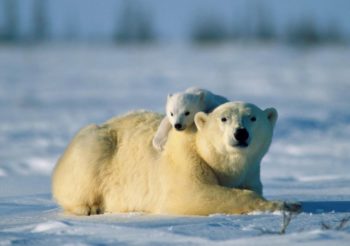
Pack ice is year surrounds Bear Island (Bjørnøya)at the southern end of the archipelago for the first time since 2009 at this date, and continues the pattern of high extent and thickness of ice in the Barents Sea since last summer.
On the 3rd of April 2020, it looked like the highest extent on record had been reached, according to the NIS graph above.
But because the graph only goes back to 1981 (see the ‘Min/Max’ dotted line), that’s not the case: it was only the sixth-highest compared to records that go back to at least 1969 (and 81,483 sq km above the 1981-2010 average).
However, the difference between extents on 3 April 1988 (511,048 sq km) must be almost statistically indistinguishable from 3 April 2020 (507,194 sq km) because it’s certainly indistinguishable on a graph as crude as the one presented to the public above.
Although their archived ice charts available online only go back to 1998 for April, the NIS noted on 3 April 2020 via Twitter [my bold]:
“The last time there was this much #seaice around #Svalbard on this day of the year was 1988, with 511,048 sq km. This year’s extent has only been exceeded by, in ascending order, 1988, 1971, 1977, 1969 and 1978.“
On the 7th of April, NIS noted the ice was similarly 7th highest on record (79,124 sq km above the 1981-2010 average at 502,563 sq km), compared to records going back to at least 1969.
The ice that surrounded Bjørnøya at the southern end of the archipelago last year in early March, which brought bears to the island for the first time since 2011, was gone by 21 March or so.
Although 2004 had the highest Svalbard extent at the end of February (making 2020 the second-highest at that date), there was no ice anywhere near Bjørnøya in early April 2004.
While there was ice that far south in 2000 at 3 April, as well as in 2001 and 2006 and 2009 at that date, the presence of ice surrounding Bjørnøya in 2020 was still a rare occurrence in early April: note that Bear Island isn’t even included on the Svalbard ice map for 2009, below:
We likely won’t hear about March and April visitors to Bjørnøya until later in the year.
Below is the global ice extent on 7 April 2020. Note that while ice is gone from the Gulf of St. Lawrence, polar bears seldom venture that far south, as is also true for the southern Bering Sea in the western Arctic, where the ice will likely retreat north quickly:
Graph below shows how global ice extent in 2020 and 2006 at 7 April compares to the long term average (back to 1979):
March extent average for 2020 came in higher than the last five years (or, as the NSIDC prefer to put it, the ’11th lowest’ since 1979):
Dr. Susan Crockford is a zoologist (former adjunct professor, University of Victoria) specializing in Holocene mammals, including polar bears and walruses. Her new book is called The Polar Bear Catastrophe That Never Happened (Amazon).
Read more at Polar Bear Science


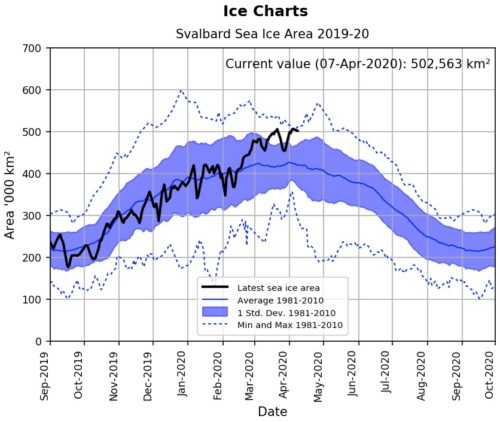
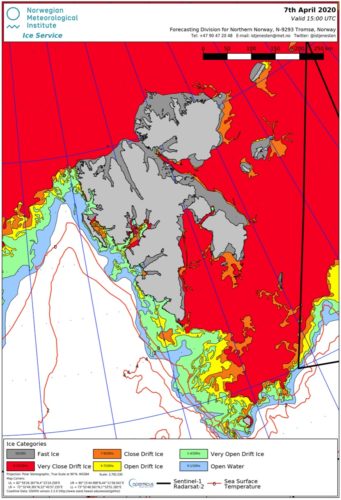
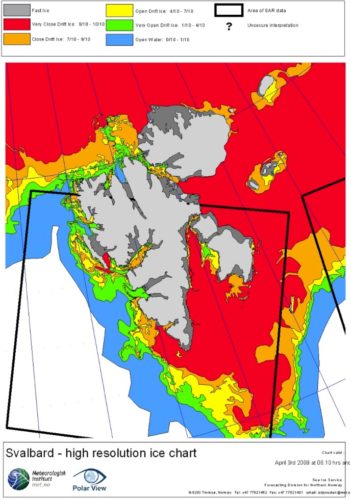

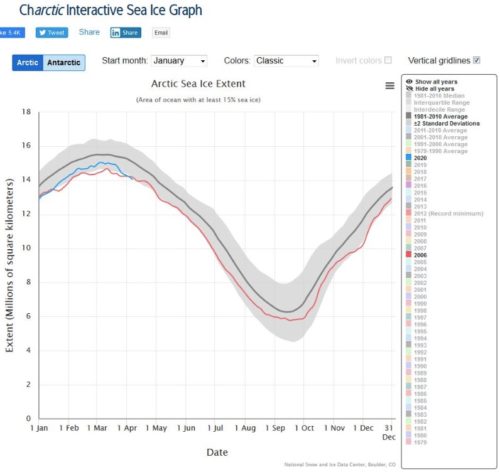
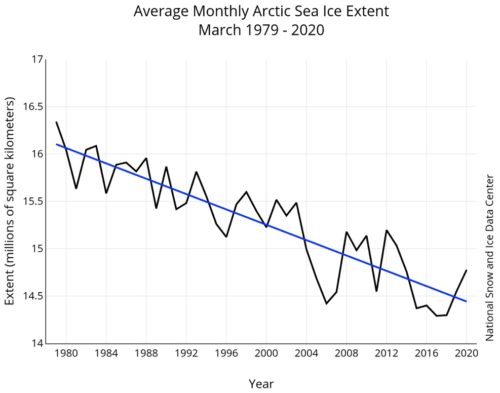

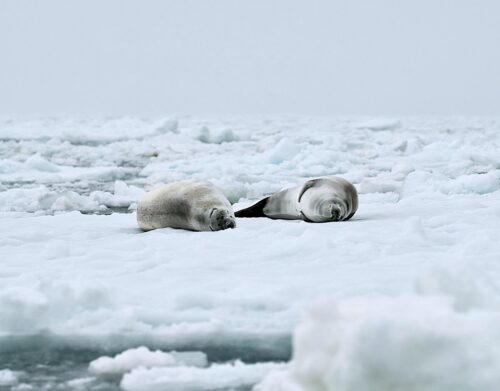















Sometimes there is more ice. Sometimes there is less. But less ice is a bad thing. Why is that again?
Arctic ice is floating on the water, and if it all melts, has less impact on sea levels and all the other catastrophic impacts that the alarmist want to wave in front of our faces.
No evidence that Arctic sea ice extent or volume is related to AGW climate change.
https://tambonthongchai.com/2019/11/07/precipitous-decline-in-arctic-sea-ice-volume/
https://tambonthongchai.com/2019/09/28/sea-ice-extent-area-1979-2018/